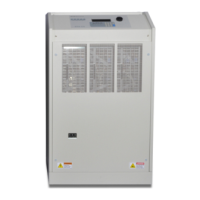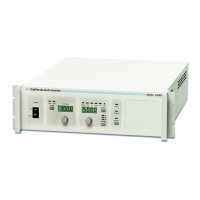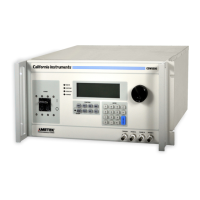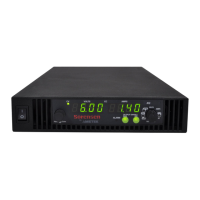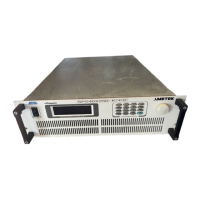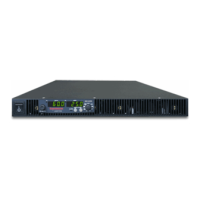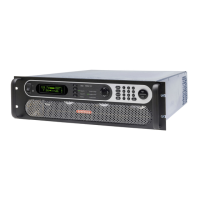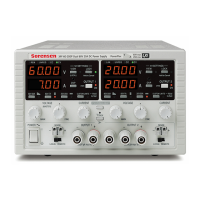User Manual AMETEK Programmable Power
RS Series 130
5.2 Overall Description
Three-phase input power is routed from the back of the cabinet to a fuse holder terminal block
located in the bottom front of the unit. The lower front access panel has to be removed to gain
access to the AC input connection fuse block. From the fuse block, the AC input is connected to
the three-phase input transformer primary. The input transformer provides the required isolation
between input and output of the RS and accommodates various input voltage ranges by
employing multiple taps. Three sets of three-phase output secondaries are provided by the
transformer to produce three 140 VAC unregulated output AC buses. Each of these outputs is
fed into one of the power modules. (A, B and C) The power modules can be individually
removed although for most configurations, all three are required. The power modules are located
in the middle of the RS chassis and can be pulled out from the front after removing the top
access panel and disconnecting the power input and output wiring.
Each power module contains a three-phase PFC power input module. The PFC module acts as
a boost converter using a PWM converter topology to generate a 450 VDC regulated bus. A
bank of high capacity electrolytic capacitors for each DC bus ensures ride through capability
during brown-outs and high current demands.
The DC bus provides power to the AC amplifier. Each amplifier in turn consists of four amplifier
modules labeled #1 (A1, A2) and #2 (A1, A2). These four amplifier modules are identical and
interchangeable but all four must always be present.
The output of the amplifier can be either AC, DC or a combination of AC and DC. The mode is
controller by the CPU controller based on user selection. All four amplifier modules within each
power module are controlled by a single Modulator board. The modulator board contains a high
frequency PWM modulator and additional control circuitry.
The CPU controller / oscillator assembly generates the reference waveforms and provides
frequency, amplitude, and impedance control. A current and voltage sense board is located at
the left bottom of the unit and is used to sense all output current and voltage for both control and
measurement purposes. The current sensor board, in conjunction with the CPU controller, also
supports the programmable RMS current limit function.
The system interface board controls all interaction between controller, power modules and
current sensor board. The system interface board is located in the top compartment of the RS
along with the controller.
Low voltage Power to the controller, amplifiers, system interface board and sensor board is
provided by a separate Low Voltage DC supply (LV Supply). This LV Supply takes three-phase
AC input directly from the AC input line through circuit breaker CB1 located on the front on the
RS. This circuit breaker functions as the main power on/off switch of the RS unit.
The LV Power Supply board converts the AC input into a number of isolated low voltage
regulated DC supplies that are distributed throughout the RS chassis. The LV power supply also
supplies coil power for all contactors, including the AC mains contactor (K2). A small fan is
located near the LV Supply to provide sufficient cooling of the supply and the other modules in
the top section of the RS.
The individual assemblies are described in more detail in the following paragraphs. Refer to
Figure 5-1 for an overall functional block diagram.
